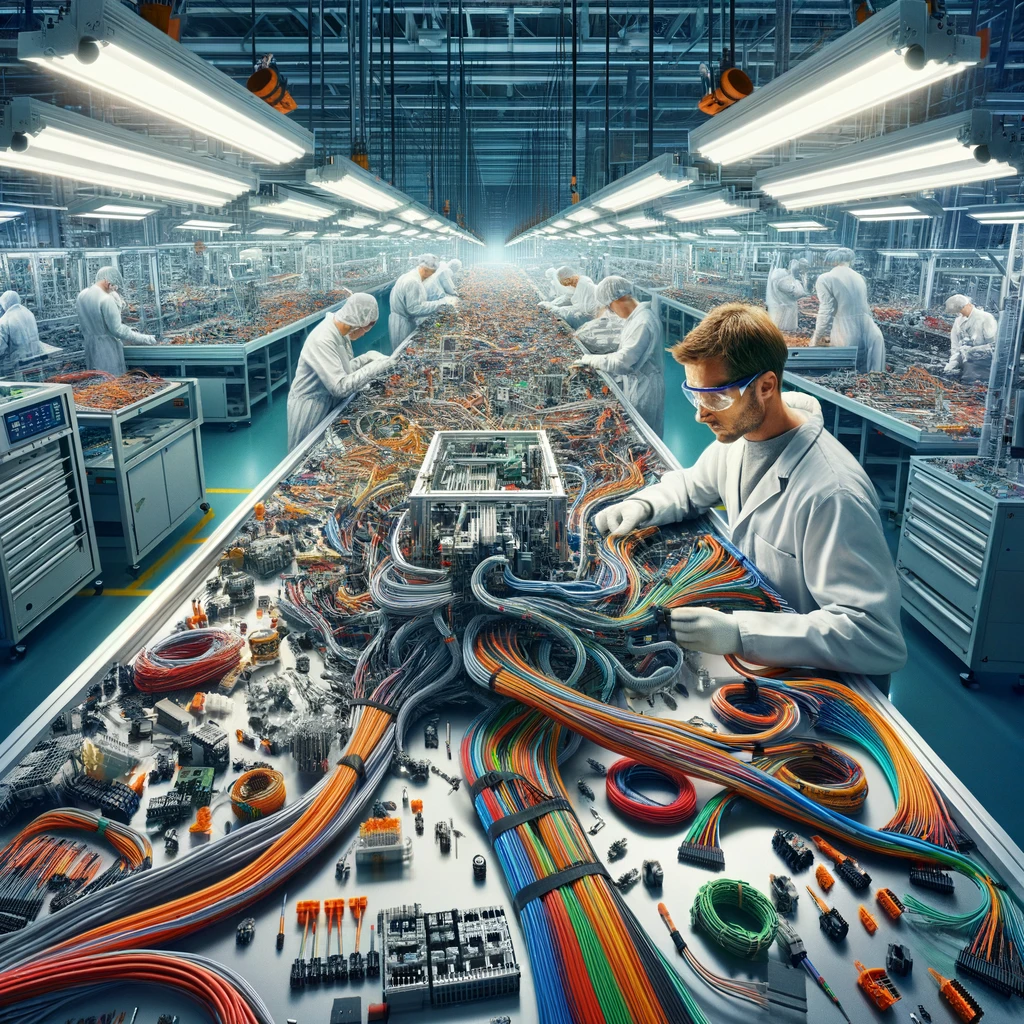What is Wiring Harness Assembly?
In the intricate world of electrical systems, the wiring harness assembly stands out as a fundamental component that plays a critical role in the efficient and organized transmission of electrical power and signals. This article delves into the nuances of wiring harness assembly, offering insights into its definition, components, types, manufacturing process, and diverse applications.
Introduction
The evolution of electrical and electronic systems across various industries has necessitated the development of more organized and efficient methods for managing multiple electrical wires and cables. Enter the wiring harness assembly – a sophisticated solution that bundles cables together, ensuring that electrical systems are neatly organized, safe, and reliable.
[Insert Image: Diagram of a basic wiring harness assembly]
What is Wiring Harness Assembly?

A wiring harness assembly is an assembly of electrical cables or wires which transmit signals or electrical power. These are bound together by straps, cable ties, sleeves, cable lacing, electrical tape, conduit, a weave of extruded string, or a combination thereof. This assembly is designed to simplify the installation process of electrical systems and provide a standardized solution to the complex issue of wiring.
[Insert Image: Close-up of wires and cables bound together in a harness]
Components of a Wiring Harness
The wiring harness assembly comprises various components, each serving a distinct function. Key components include:
- Conductors: Wires or cables that carry electrical current.
- Connectors: Devices that connect wires to other wires or to components.
- Terminals: Endpoints where wires are attached to connectors.
- Protection: Sleeving materials that protect wires from environmental hazards.
[Insert Image: Components of a wiring harness assembly]
Types of Wiring Harnesses
Wiring harness assemblies are not one-size-fits-all. They vary significantly based on their intended application, including:
- Automotive wiring harnesses: Designed for vehicles, managing everything from basic lighting to complex electronic systems.
- Aerospace wiring harnesses: These harnesses cater to aircraft and spacecraft, adhering to strict standards for safety and reliability.
- Industrial wiring harnesses: Used in manufacturing equipment, robots, and other industrial applications.
The Manufacturing Process
The creation of a wiring harness assembly is a meticulous process that requires precision and attention to detail. It typically involves the following steps:
- Design and Development: Engineers design the wiring harness layout using specialized software, considering factors such as electrical requirements, space constraints, and safety.
- Prototyping: A prototype is created to test the design’s feasibility and functionality.
- Assembly: Conductors are cut to length, terminals are attached, and wires are bundled together using the chosen binding method.
- Testing: The completed harness is rigorously tested for electrical functionality and compliance with specifications.
- Quality Control: Ensures the harness meets all quality standards and specifications before it is shipped to the customer.
[Insert Image: The manufacturing process of a wiring harness]
Applications of Wiring Harness Assemblies
The versatility and efficiency of wiring harness assemblies make them indispensable in a wide range of industries, including:
- Automotive: From passenger cars to heavy-duty trucks, wiring harnesses are crucial for operating lighting, entertainment systems, and engine components.
- Aerospace and Aviation: Ensuring safety and functionality in the complex electrical systems of aircraft and space vehicles.
- Electronics: In devices such as computers, smartphones, and home appliances, harnesses manage power and signal transmissions.
- Industrial and Manufacturing: Wiring harnesses streamline operations in machinery, reducing downtime and maintenance costs.
[Insert Image: Various applications of wiring harness assembly in different industries]
Conclusion
The wiring harness assembly is a critical component in modern electrical systems, providing a structured and efficient method of managing wires and cables. Its importance spans across various sectors, including automotive, aerospace, electronics, and industrial applications. As technology advances, the role of wiring harness assemblies will continue to grow, further emphasizing the need for innovation and precision in their design and manufacturing.
In conclusion, understanding the intricacies of wiring harness assembly is essential for professionals in the electrical and electronics fields, offering insights into the backbone of modern industry and technology’s electrical systems.
Share:
More Posts

Humanizey Review: I Tested Everything Out
Humanizey Review: I Tested Everything Out AI writing tools have changed the way we create content. They’re fast, smart, and efficient. But even the best

AllPCB Review: Can We Trust It?
AllPCB Review: Can We Trust It? In this in-depth review, we’ll examine AllPCB’s strengths, weaknesses, and whether it deserves your trust. We’ll also explore PCBPit,

PCBgogo Review: Is It A Good PCB Manufacturer?
PCBgogo Review: Is It A Good PCB Manufacturer? In this in-depth review, we’ll dissect its strengths, weaknesses, and alternatives—with a focus on PCBPit, a rising

NextPCB Review: Does It Really Work?
NextPCB Review: Does It Really Work? Choosing a reliable PCB manufacturer is critical for bringing your electronics projects to life. NextPCB has been a prominent

